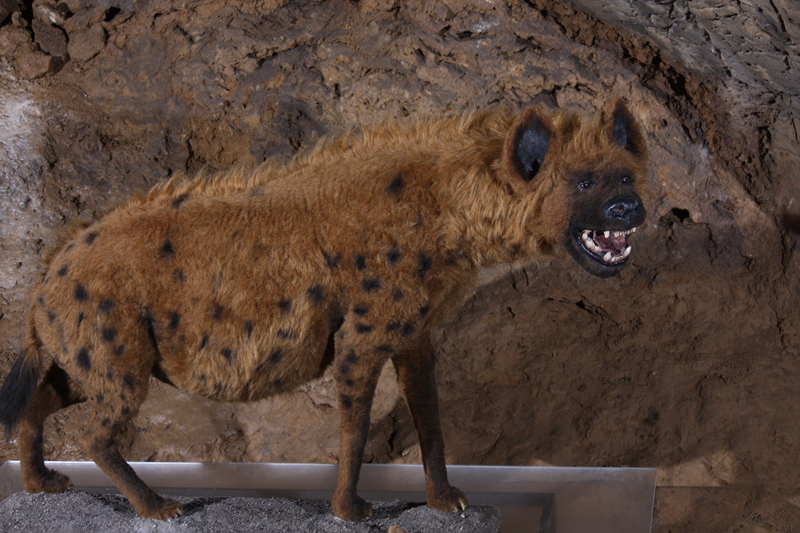cave hyena (Crocuta crocuta spelaea) Heinrichshöhle, Höhlenhyäne
Date 25 March 2010
Source Heinz-Werner Weber
Author Heinz-Werner Weber
Source: https://commons.wikimedia.org/wiki/File:Heinrichsh%C3%B6hle_7.jpg
The cave hyena (Crocuta crocuta spelaea), also known as the Ice Age spotted hyena, was a paleosubspecies of spotted hyena which ranged from the Iberian Peninsula to eastern Siberia. It is one of the best known mammals of the Ice Age and is well represented in many European bone caves. The European cave hyena was much larger than its modern African cousin, having been estimated to weigh 190 kg. The cave hyena was a highly specialised animal, with its progressive and regressive features being more developed than in its modern African relative. It preyed on large mammals (primarily wild horses, steppe wisent and woolly rhinoceros), and was responsible for the accumulation of hundreds of large Pleistocene mammal bones in areas including horizontal caves, sinkholes, mud pits and muddy areas along rivers. The cause of the cave hyena's extinction is not fully understood, though it could have been due to a combination of factors, including climate change and competition with other predators.
